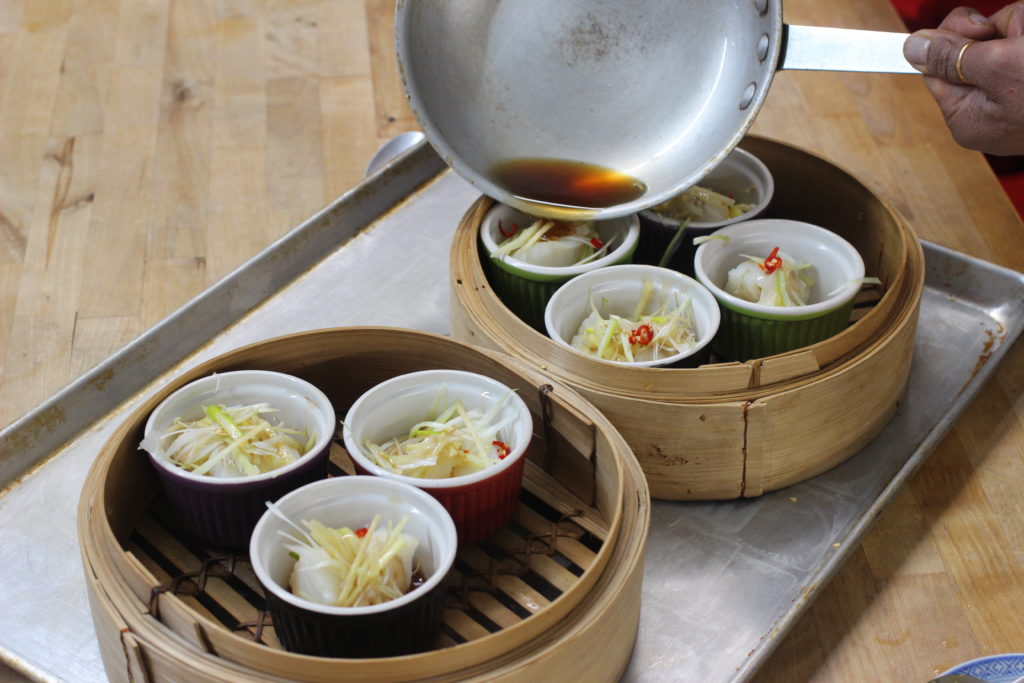
“Expectations are Boring,” says cooking instructor Nantha Kumar at his Southeast Asian seafood class at the Centrale Culinaire a few weeks ago. It was a bone-chilling evening, but a class of eager students shlepped to the Mile-End shared kitchen space for a hot payoff…
Southeast Asian food can be spicy. But not too spicy – never so spicy that you can’t taste the fresh galangal and lemongrass in the steamed cod otak-otak or the sweetness of the sambal-braised crab.
But let’s get back to those expectations.
As a man who used to have his own restaurant with a cult following and left it in favour of the freedom to travel to Malaysia and Mexico to do pop-up dinners and classes, he understands how boring expectations can be.
All the better for his students; it feels like a steal to get a Malaysian feast, a cooking class and a behind-the-scenes look at how he crafts his cuisine for $100. Have you ever cleaned crab or razor clam before? I hadn’t. I’m not going to say I was any good at it, but with Nantha handling the culinary heavy lifting, we were in good hands. He stayed busy for three hours – balancing spices in the slow-cooked spicy sambal paste that coats the crab and clams; blending the herbs, rhizomes and spices for the otak-otak; and pouring the hot sesame oil over the cod, ginger and firm tofu sliced like custard at the bottom of a ramekin and seasoned with sriracha and coconut – while we asked a million questions and helped a little. And “seasoned” teacher that he is, Nantha even said I did a fine job, whereas I can only imagine Gordon Ramsay berating me for massacring those poor clams.
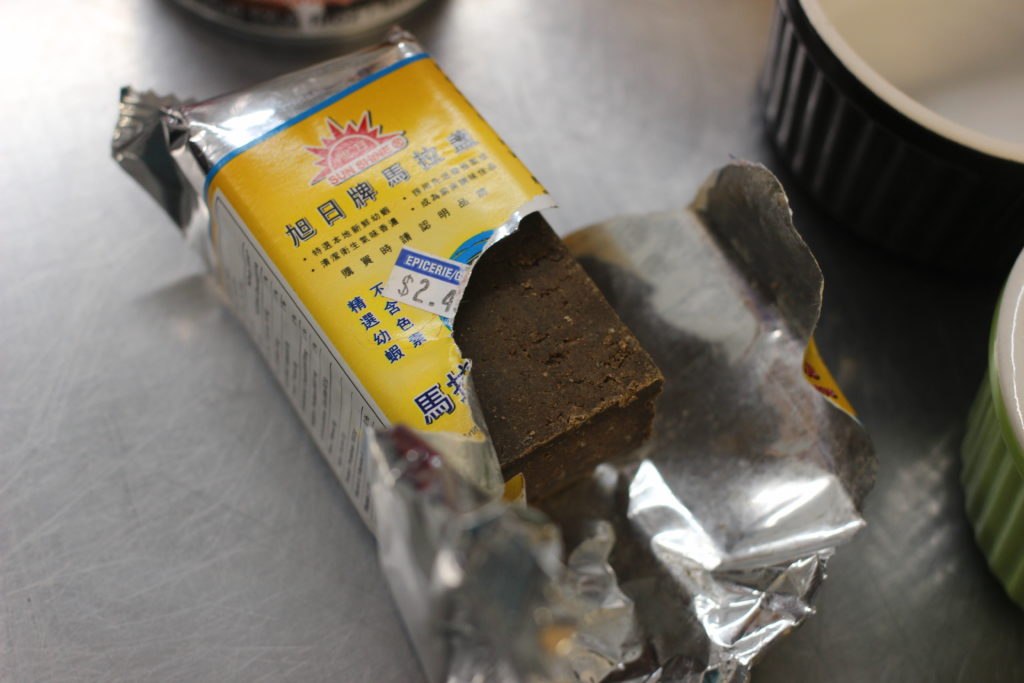
What did we learn?
We learned to toast dried shrimp paste – the staple of funkiness of Malaysian cooking (available at Heng Heng and Kien Vinh in Chinatown, he added) – to bring out the flavour, then grate it by pressing it through a colander so it doesn’t end up chunky and you end up eating a nugget of salty paste.
He taught us to add enough toasted coconut to make sure the otak-otak wasn’t too soggy for its banana leaf wrappings. Though he made the dish in fool-proof ramekins instead of grilling the banana leaf packages, the goal was to get the right, silken texture. He didn’t want a purée – where’s the fun in every bite being the same?
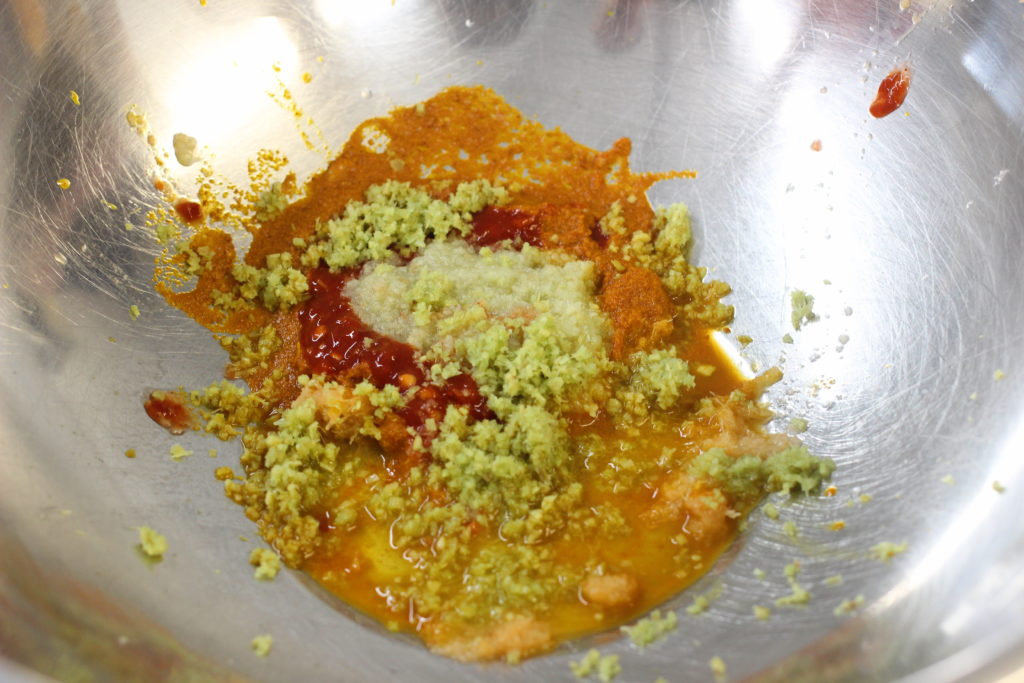
He taught us about his GOD GOG sauce. That stands for ginger, onions and garlic, a purée that forms the base of most of his dishes. He probably goes through a litre in a week, thanks to the $10 lunches he sells at the Centrale Culinaire (different chefs trade off the responsibility each day).
Making the Steamed Cod with Tofu Slices, Ginger and Sesame Oil:
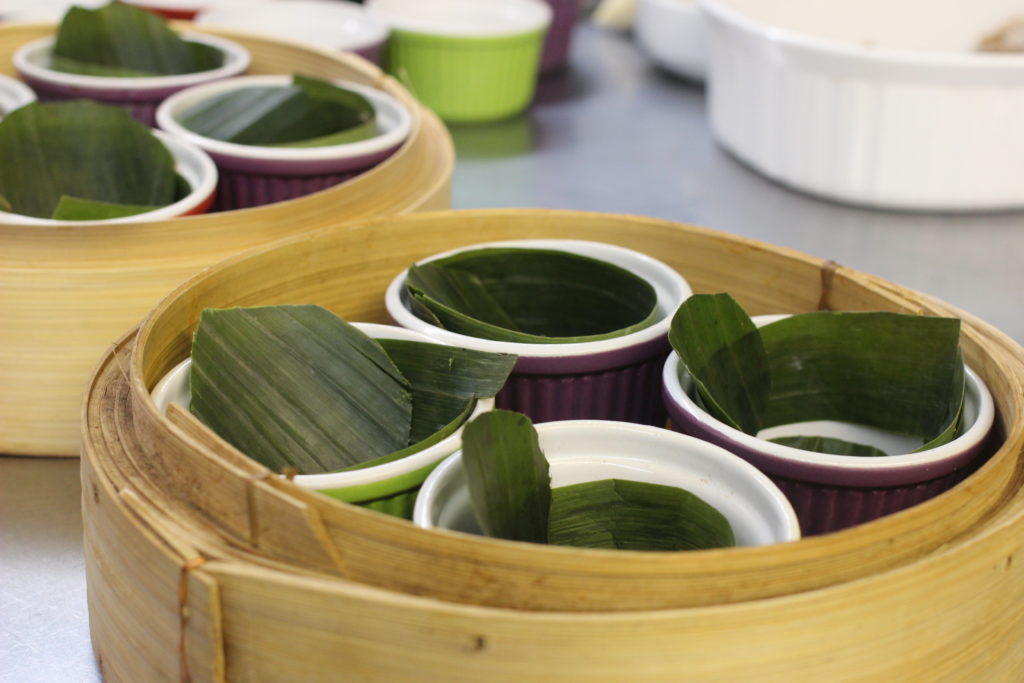
Preparing the steamers 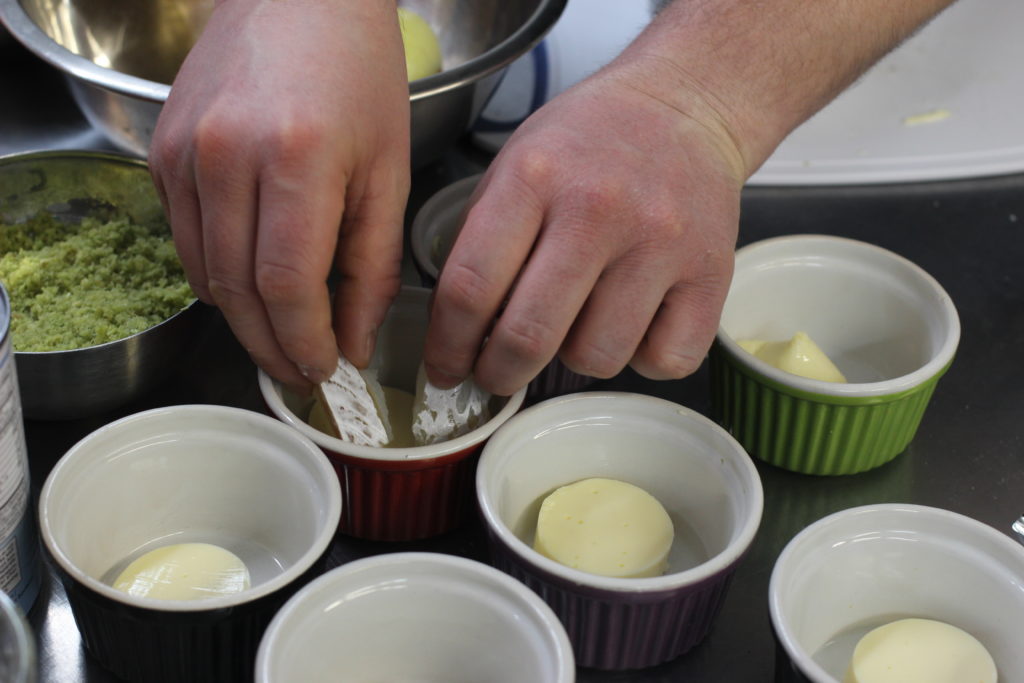
Placing the cod pieces on top of tofu slices 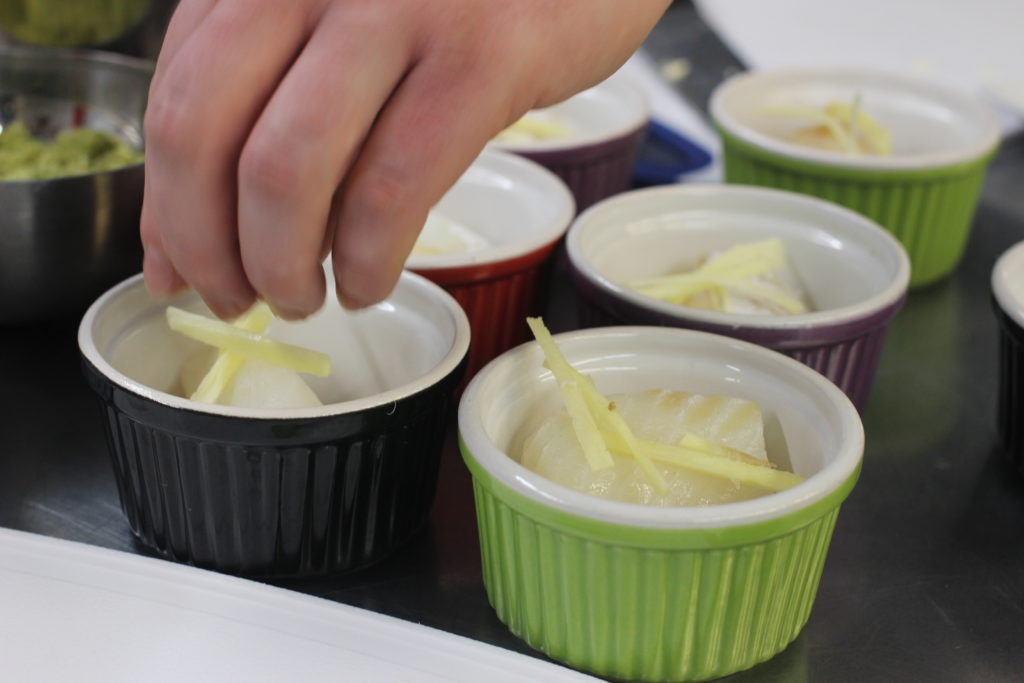
Adding fresh, sliced ginger 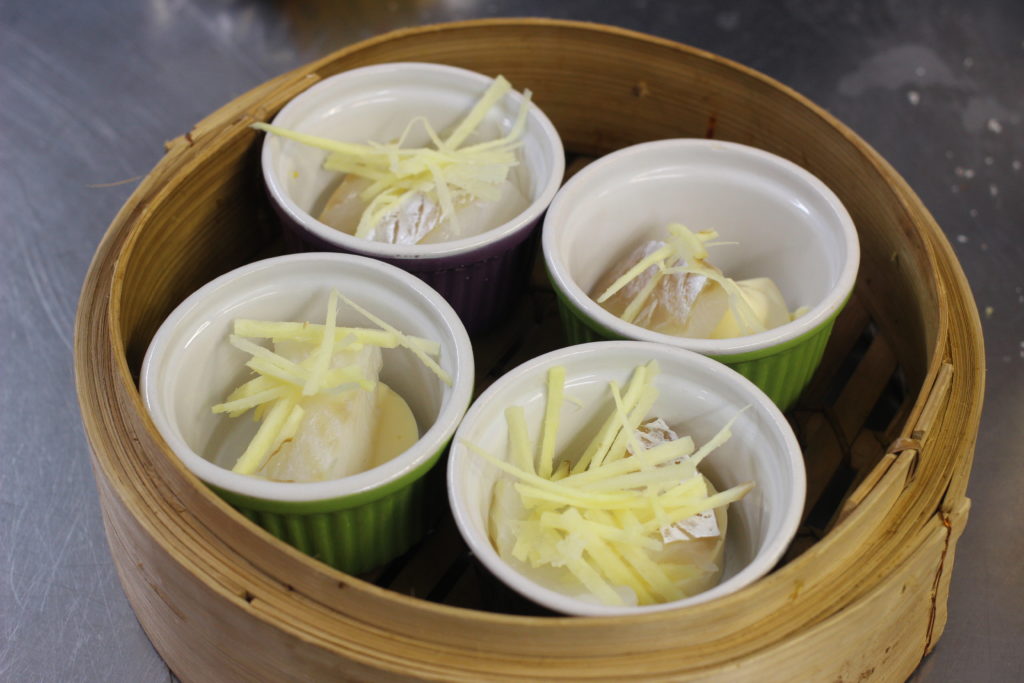
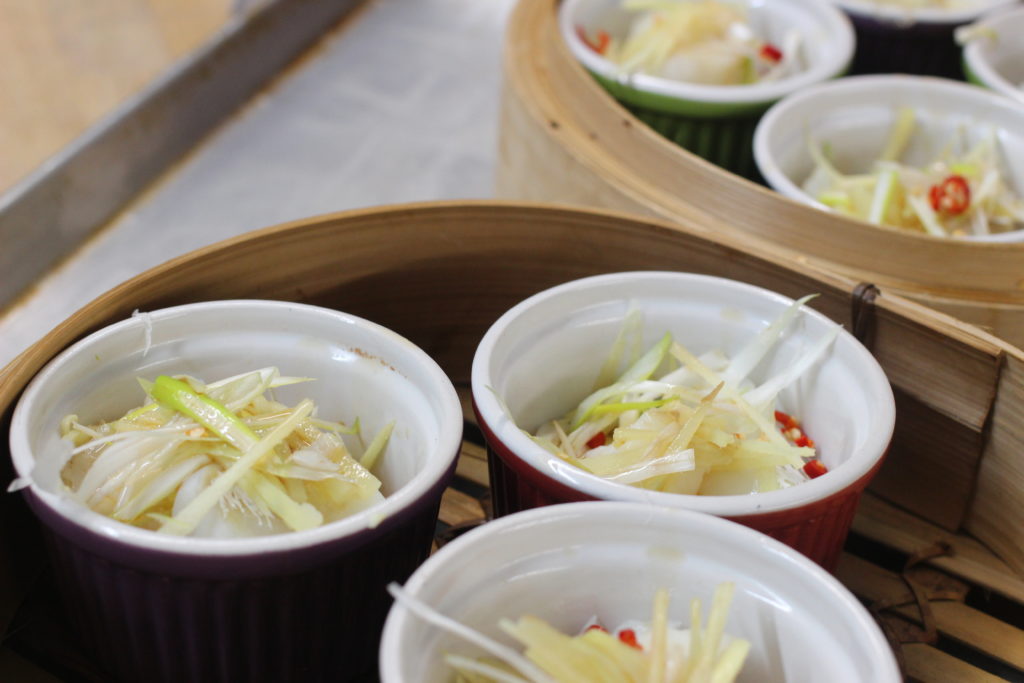
A little fresh chili pepper 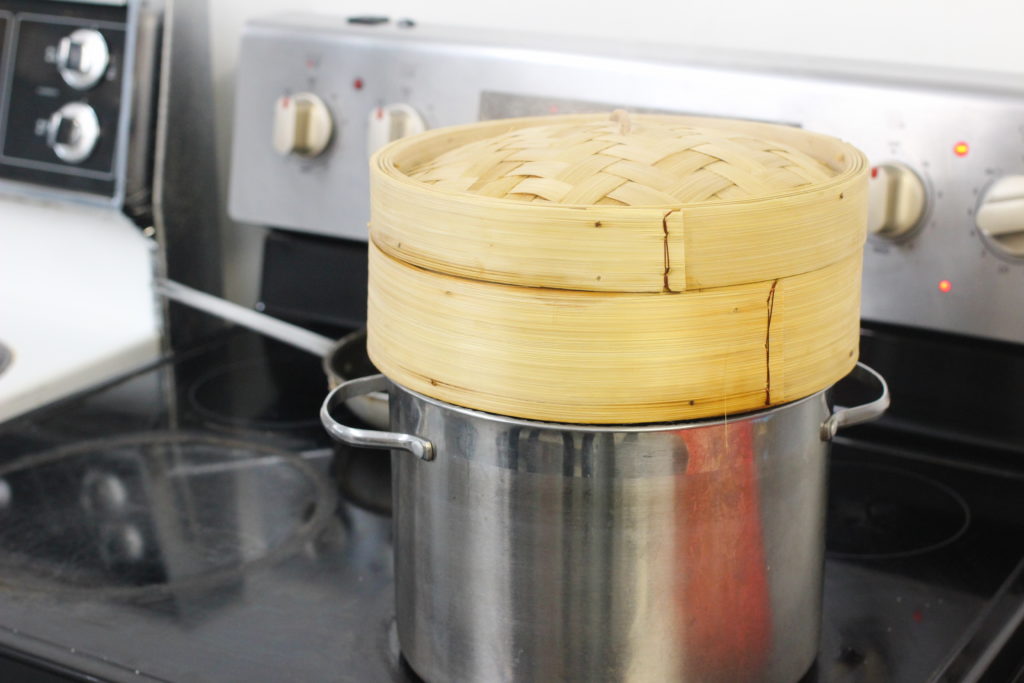
Steaming the fish 
Removing from the heat and pouring over the hot toasted sesame oil 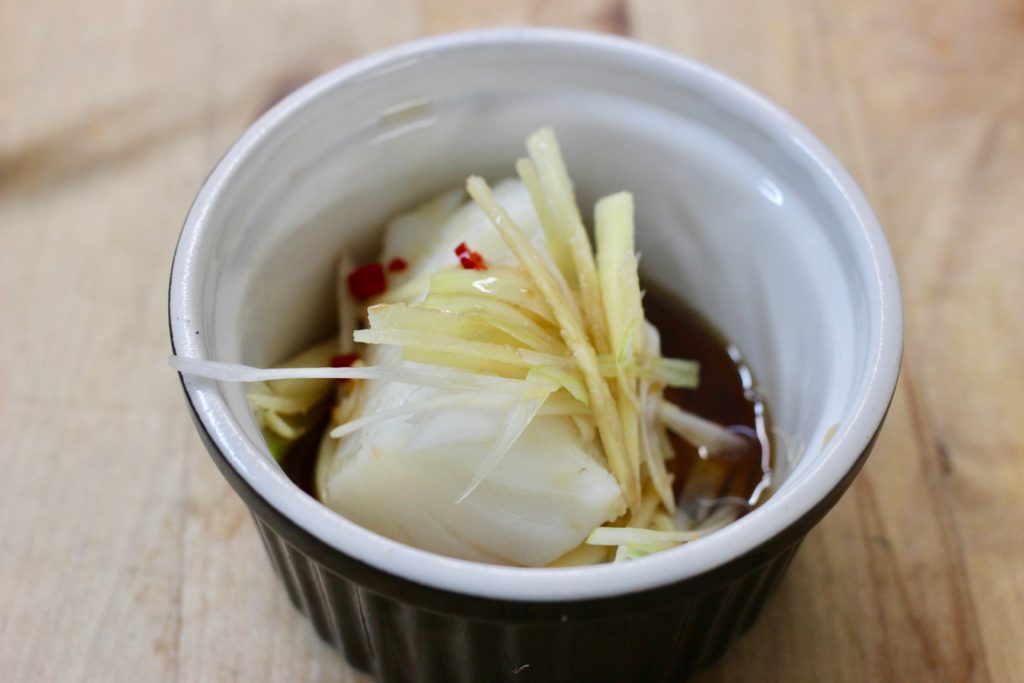
Done
He taught us about how to most ethically kill a crab. It involves a sharp knife and a couple chopsticks to keep the crabs claws occupied.
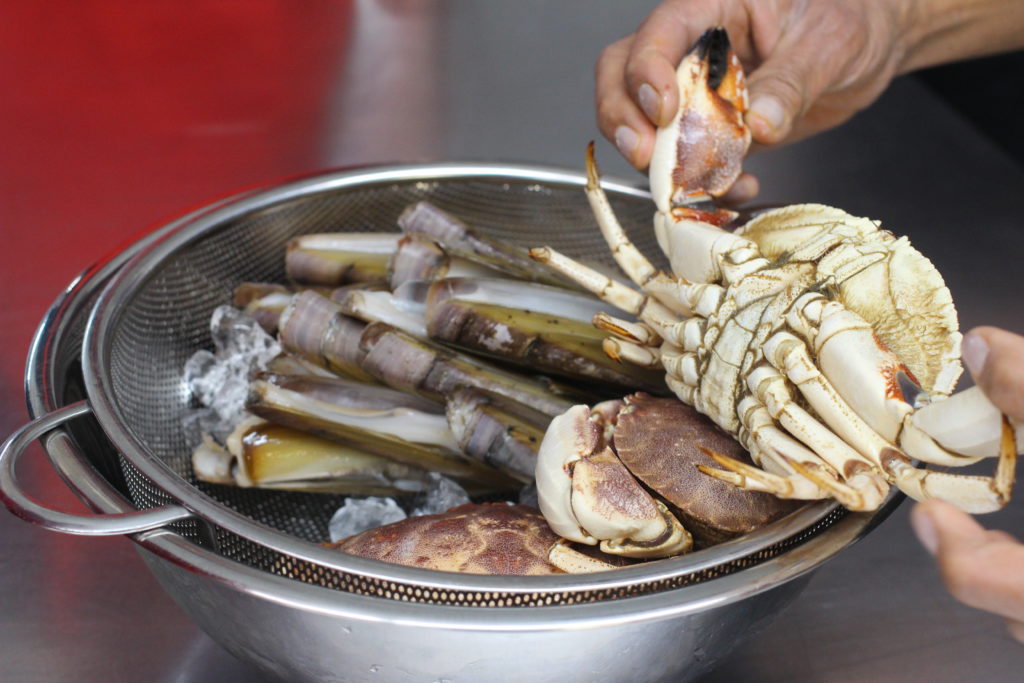
He taught us about rau ram, and how it amps up the otak-otak. The Vietnamese herb is also called laksa leaf and sawtooth herb, I believe.
He taught us that it’s possible to use a cleaver and not be too scared to speak at the same time, since he used his while looking directly at us, rather than at at what he was cutting. Don’t try that at home.
And he told us that sambal is better on Day 2, so make a big batch. With all the chili peppers and oil, it’ll keep in the fridge for at least a month anyway. Longer in the freezer.
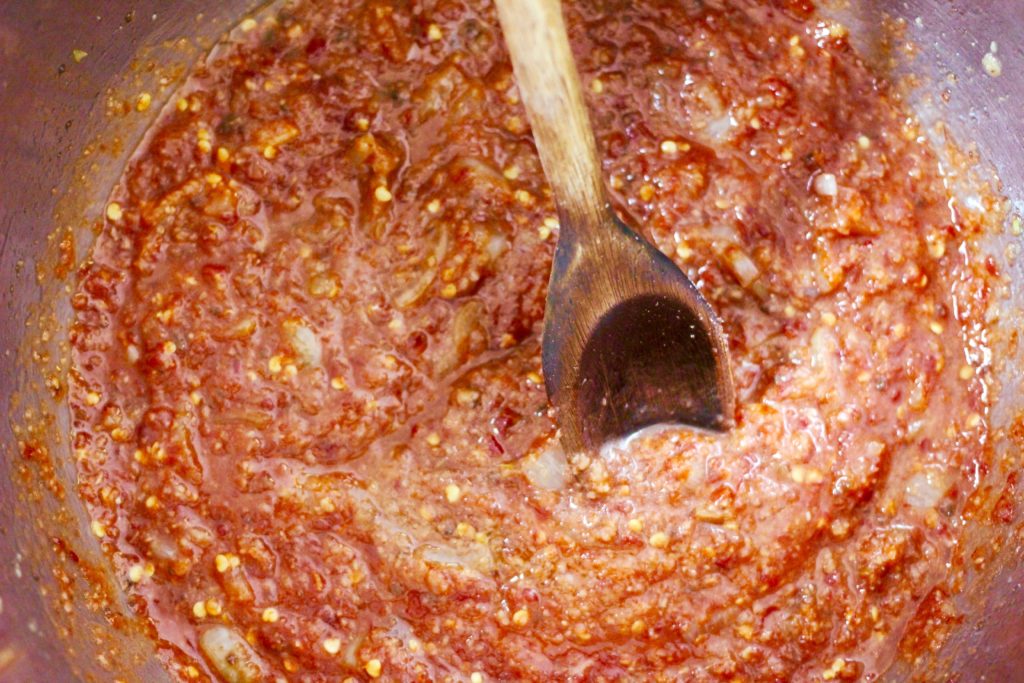
He taught us that there are hundreds of versions of sambal. Every family has a different one, and growing up in Malaysia, he takes his heritage and his culinary learning and puts it into this one, tasting as he goes, adding more salt, more sambal oeklek, more ginger as needed. As it cooks, the fieriness of the ginger softens, the garlic caramelizes and sweetens, and the whole thing comes together into an addictive mess of a sauce that’s like the best arrabiata pasta sauce topped with bottarga that you’ve ever eaten, but then better. (If you haven’t eaten arrabiata – spicy – tomato sauce with grated dried fish on top – the Italian version of belancan, but much less umami – just make sambal instead). Maybe we’re programmed to think less funky flavours are better, more desirable, but remember, expectations are boring.
But the most important thing he taught us that we need to taste as we cook.
And that’s what we did. We ate the egg-y otak-otak, rich with tamarind with and coconut, with turmeric rice.
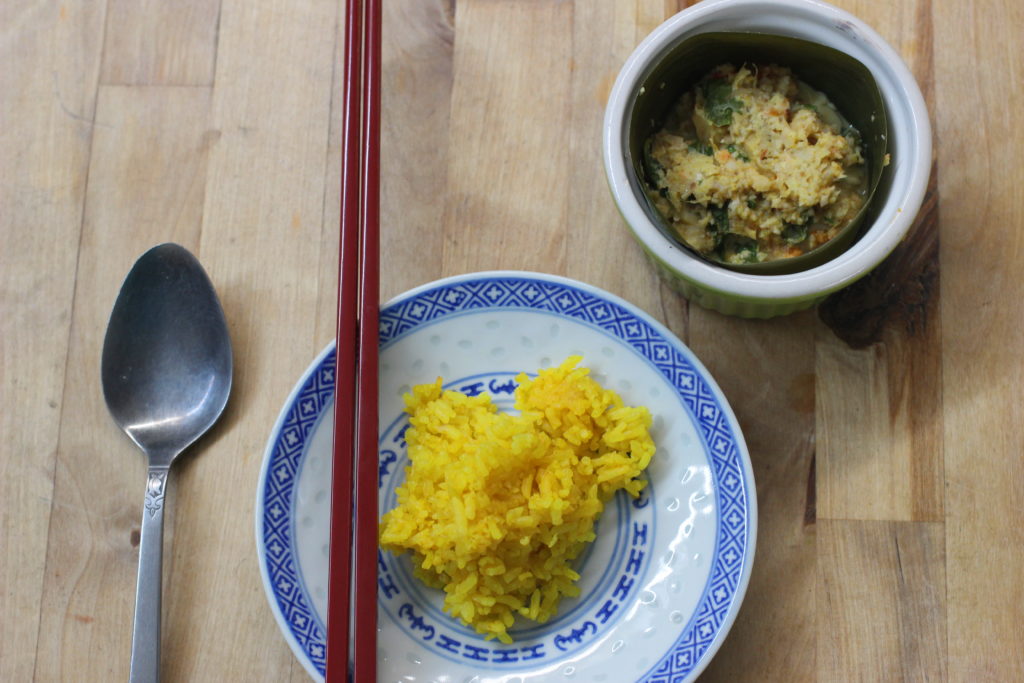
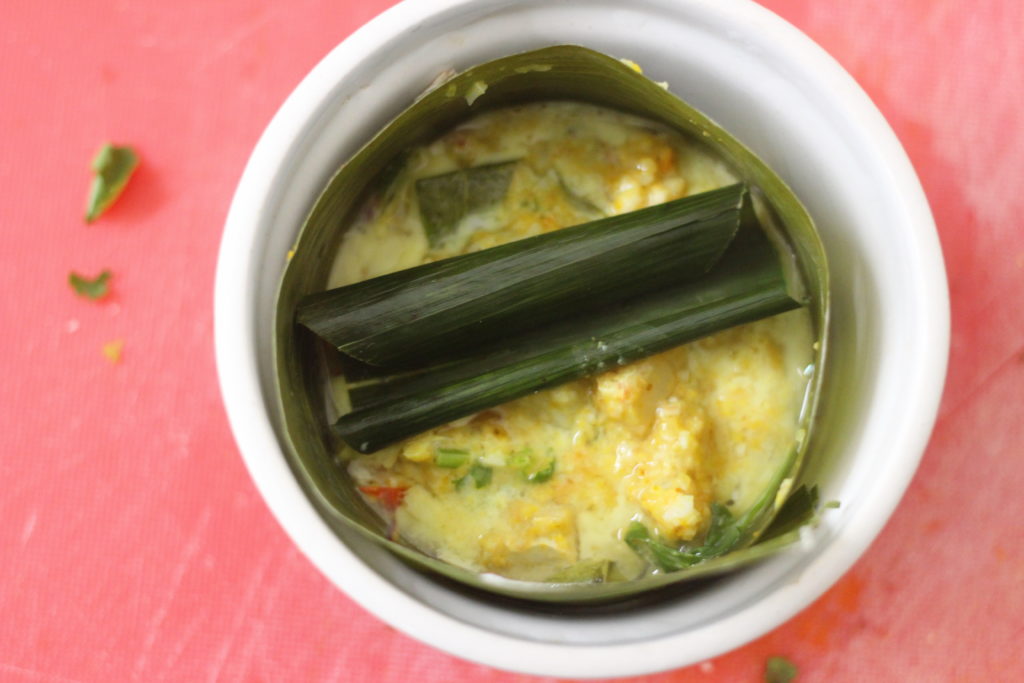
Then the steamed cod with tofu and ginger, the toasted sesame wafting into our nostrils as we inhaled and slurped.
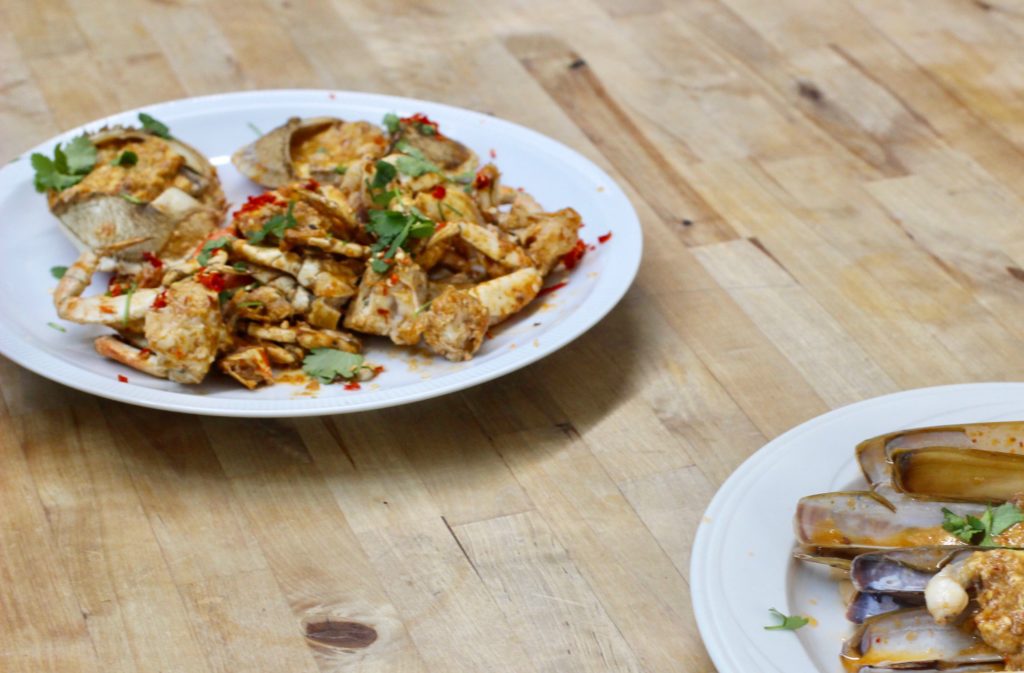
And finally, the crabs, cooked in sambal mixed with coconut milk and egg. Such a simple preparation once the sambal is ready. It barely took a minute for the clams and a few more for the crab before we were all back at the table ripping (literally) into the creamy shellmeat of the crab, the sweet, fleshy claws and the silken lengths of the razor clams still in their shells (massacred, yes, but still delicious).
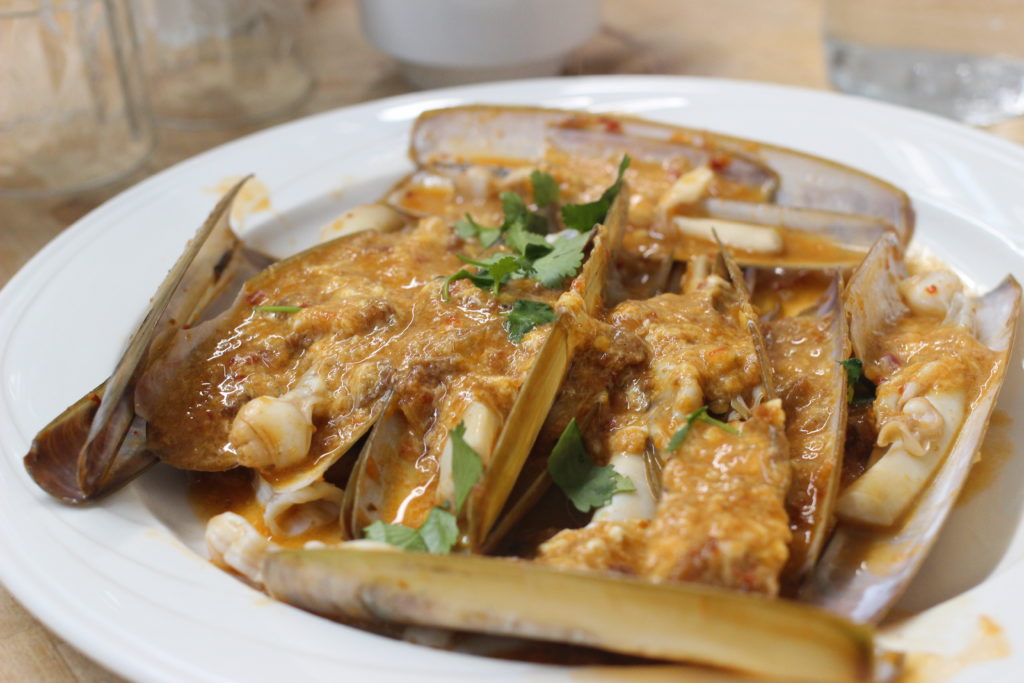
My fingers smelled like shrimp paste for the rest of the evening, which only me sad that the feast was over, because Nantha’s the most welcoming host, the most exciting teacher, the best story-teller and the most adventurous spirit I’ve found in Montreal’s hot and spicy food scene.
And a night with him is full of surprises, and always wonderful food.
For his upcoming cooking classes, check out his Facebook page, Nantha’s Kitchen. The next seafood class will be Saturday, Feb. 23. Sunday, Feb. 24 he’ll be teaching a class with a menu of dhal, jackfruit sothi, steamed cod, Char Koew Teow, and coconut rice. He’s also cooking a multi-course Malaysian-Thai dinner this Friday as a fundraiser for the Montreal Fringe Fest. And he’ll be in Hamilton Feb. 10 and 11 for classes then back to Montreal. You can try his food at the Centrale Culinaire’s chef lunches occasionally.
Leave a Reply